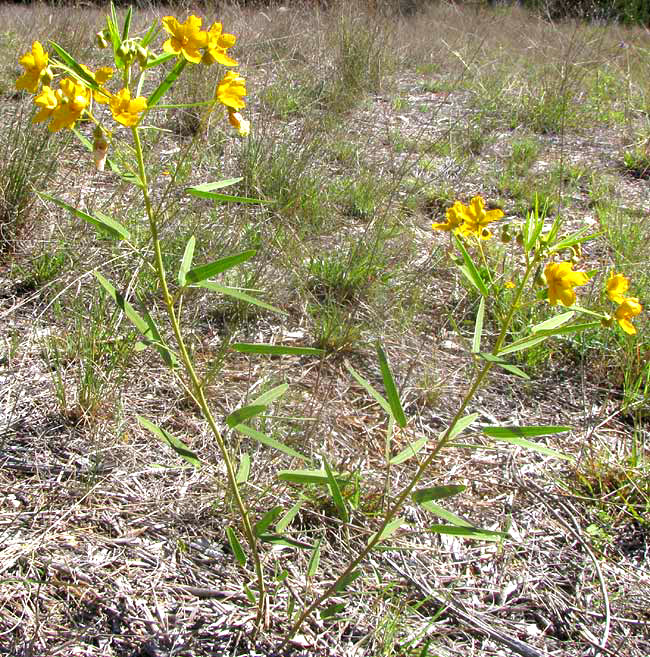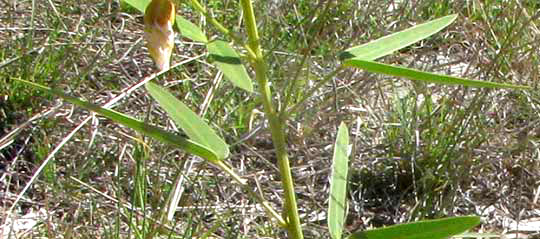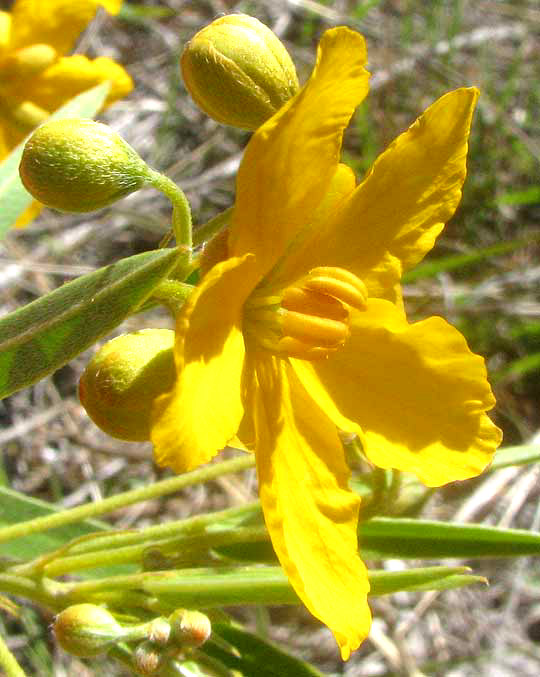Excerpts from Jim Conrad's
Naturalist Newsletter

from the the May 12, 2013 Newsletter issued from the Frio Canyon Nature Education Center in northern Uvalde County, southwestern Texas, on the southern border of the Edwards Plateau; elevation ~1750m (~5750 ft); N29.62°, W99.86°; USA
TWOLEAF SENNA
Above you see a common wildflower blossoming now in grassy spots and elsewhere where the soil is thin atop limestone. It's a 15-inch (40cm) perennial herb. Lots of wildflowers nowadays bear yellow-orange blossoms like these, but up close you notice that this plant's leaves are unusual. They're compound, with each leaf consisting of only two stiff, slender leaflets joined at their bases forming wide Vs. A close-up of two leaves is shown below:

Up close the inch-broad flowers (2.5cm) immediately bring to mind flower types we've often seen in the Yucatan, as you can see below:

Besides the yellow-orange color, what's notable is that the corolla is almost radially symmetrical, but not quite; it's barely bisymmetrical, with some petals a little larger than the others. Moreover, the nine or ten stamens -- looking like little yellow bananas on stems in the corolla's center -- are different sized as well, some so small and poorly formed that they're sterile.
These field marks point us toward the big Bean Family genus Senna, of which maybe 300-350 species are recognized, and in Mexico we've seen our share. Though Senna leaves always are compound, normally they're divided into many leaflets, so this species' mere two leaflets is something very special. In fact, that feature gives the species its main common name, which is Twoleaf Senna. It's SENNA ROEMERIANA.
Twoleaf Senna as well as many other senna species are regarded as medicinal, the most common usage being that of serving as a laxative. Tea made by boiling the plant irritates the lining of the colon causing "peristalsis and bowel evacuation," as they say. Several commercial laxatives are based on sennas, the best-known in the US probably being Black Draught.
As you might expect from a harsh irritant of the colon, in high doses Senna extract is toxic. In fact, in these parts sennas are mostly thought of as dangerous for cattle, goats and horses to eat, symptoms including diarrhea, weakness, dark urine, and death.
Twoleaf Senna is endemic to arid northeastern Mexico, southern New Mexico, most of Texas and a tiny bit of Oklahoma.